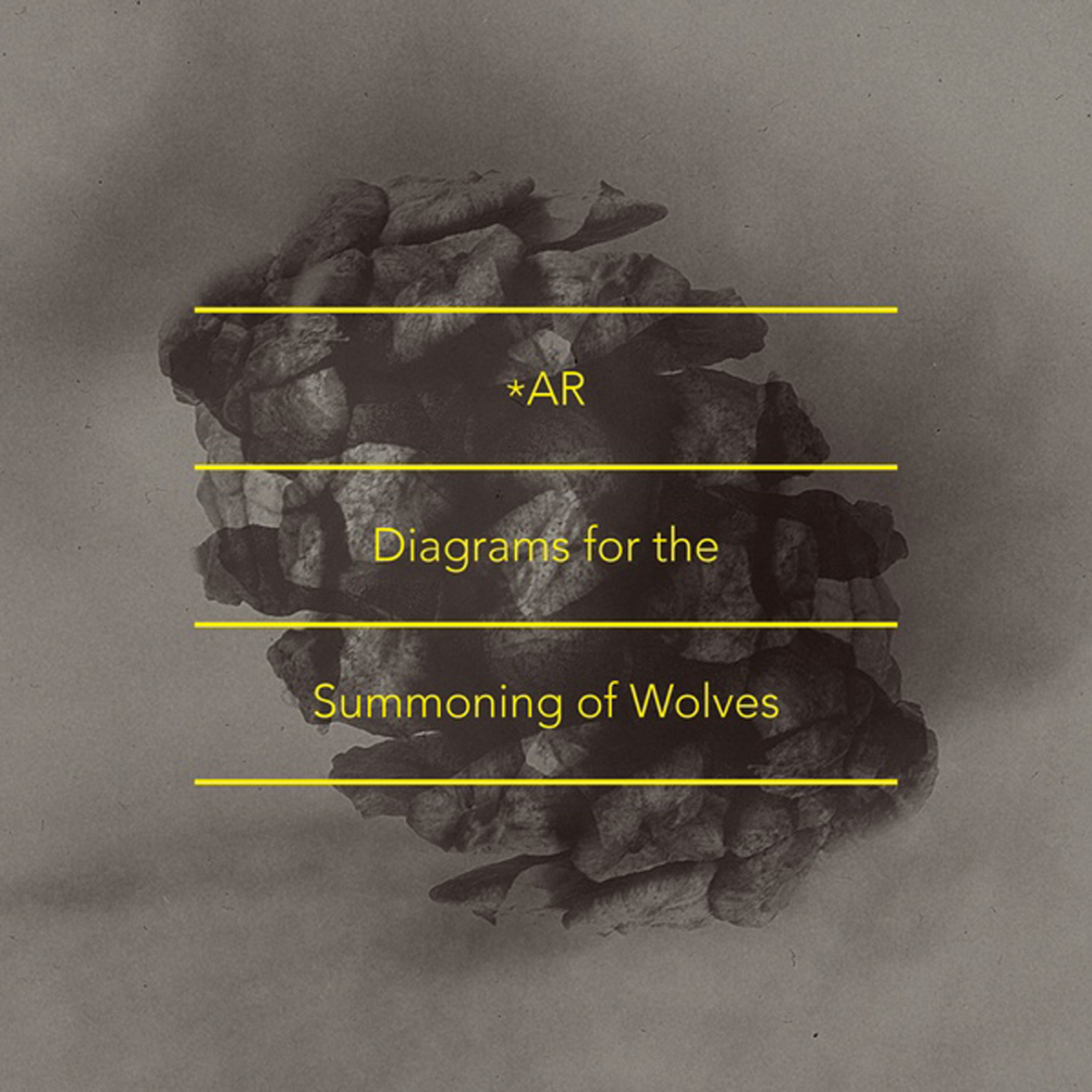*AR, "Diagrams for the Summoning of Wolves"

Being a rabid Richard Skelton fan, I was initially heartbroken when this release sold out before I could get my hands on it, but now that I have the digital version I feel quite a bit better.  As far as Skelton albums go, this is a comparatively minor one.  Also, it sounds weirdly like a solo album: while collaborator Autumn Richardson is present in name, her usual vocals are nowhere to be found.  Consisting of just a single 27-minute piece, Diagrams is a likeable, if very slow-burning, drone work built upon a characteristically groaning, melancholy string motif that casts off a (characteristically) glittering spray of harmonics.  Compared to last year's The Inward Circles album, Diagrams admittedly feels like a step back into somewhat well-trodden territory.  However, it is territory that Skelton basically owns and he ratchets up the intensity a bit more than usual this time around, so fans will probably still find plenty to enjoy about this brief dispatch.
As is traditional for Skelton and Richardson, Diagrams for the Summoning of Wolves has some very deep conceptual roots.  Like Wolf Notes and Succession before it, Diagrams is inspired by the dwindling wildness of their home turf of southwest Cumbria, but with an interesting twist.  Whereas *AR's previous albums were intended as meditations upon what was lost and what someday might return, Diagrams is almost exactly what its title suggests: a ritual to summon back the departed wolves.  Sadly, no information is provided as to where this ritual originated or its historical success rate, only that Richard and Autumn somehow transformed the hand gestures, scents, and markings of said ritual into music.  When viewed in that light, the music actually makes a lot of sense: "Hand Gestures, Scents, and Markings" feels much more like the gnarled, steadily intensifying soundtrack to an ancient pagan ritual than a mere modern composition (which would presumably get to the point somewhat quickly rather than purposely simmering in relative stasis).
The music itself generally sticks to Skelton's expected aesthetic of somber, droning bowed strings amidst a prickly thicket of creaks, squeals, and sharp harmonics, but there are some fresh divergences.  For one, "Gestures" is certainly longer than any other single piece previously recorded by *AR and its long, slow build is also something of a departure from the duo's usual fare.  Also, Skelton and Richardson augment their normal sound with some field recordings this time around, most notably with the distant wolf sounds that periodically drift into the quietly brooding opening minutes.  Finally, when it finally fully blossoms (after 15 minutes or so), "Gestures" exhibits a surprising degree of both density and ferocity: there are quite a lot of heavy, grinding metallic textures bolstering Skelton's churning strings.  For a duo as contemplative as Richard and Autumn, Diagrams unexpectedly feels like an album meant to be played quite loud, as only then does it seem like a beautiful, violent catharsis rather than an atypically stretched drone-piece.
Notably, it took me a lot longer to warm to Diagrams than either of *AR’s previous releases, as it occupies a curious sort of no-man’s land for an album: it is too slow-moving to quite work as a headphone album and too fixated on a single motif to quite work as a "song."  Instead, it just kind of feels like ambient music until it fully catches fire: easy to ignore for quite a long time, then gloriously, unexpectedly, and attention-grabbingly heavy.  The pay-off is certainly quite powerful and satisfying when it eventually occurs, but it is not quite rapturous enough to surpass either of the duo's more concise and instantly gratifying previous albums.  As such,  Diagrams is an EP that will primarily only appeal to the already converted, though I ultimately enjoyed it quite a bit,
- Hand Gestures, Scents, Markings
- Hand Gestures, Scents, Markings (excerpt 2)
- Hand Gestures, Scents, Markings (excerpt 3)
 



